
Perfect in summer or winter, soba (そば) are a staple of the noodle scene in Japan. Healthy, affordable and versatile, they can be found on the menus of fast food as well as high-end traditional restaurants. Whether you prefer them topped with crispy tempura in a steaming soup or piled high on bamboo, ready to be dipped in sauce, there’s a soba dish for everyone in Japan.
What is Soba?
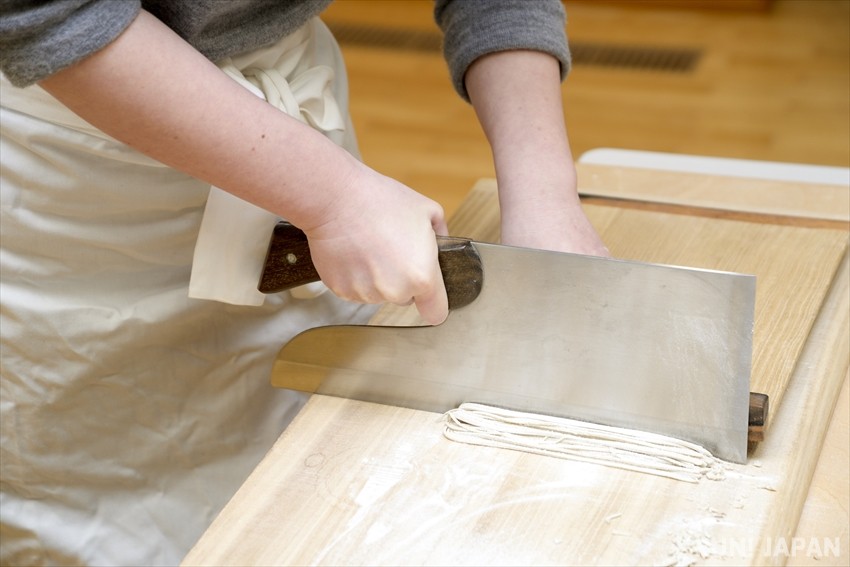
Soba is a specific kind of noodle from Japan made using buckwheat flour. While the use of the base ingredients dates back to the Jomon period (14,000 - 300 B.C.), it was originally eaten in the form of dumplings or crackers. Soba noodles were developed in the early 17th century, during the Edo period, possibly in Nagano prefecture.
They are typically quite thin compared to fatter udon noodles, for example. They are rich in thiamine and contain all eight amino acids, making them a popular choice for the health-conscious. Soba noodles can be served hot or cold and there are many regional dishes that use them, as well as popular national dishes that serve as convenient, affordable and light meals. Some makers will add wheat flour to reduce the brittle nature of the noodles, as in the traditional Nagano Soba variety.
Different Types of Soba
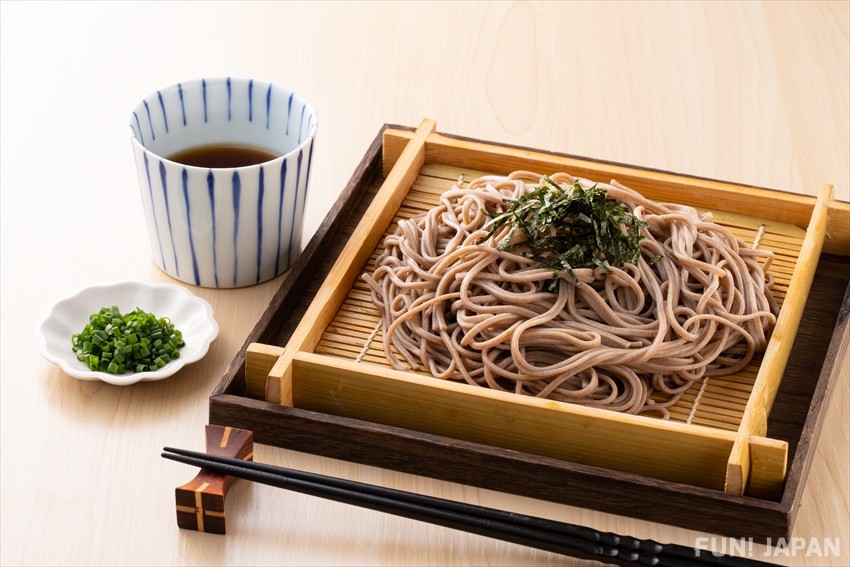
For a simple dish, there are a surprising amount of variations when it comes to soba noodles. The origin, method of making, and ingredients all offer a vast array of soba varieties to try, and that’s before you get to the seasonal and local dishes that use them!
Soba-Making Methods
While much of the soba bought in supermarkets is made using machines, traditional soba making requires the use of hand-kneading. Adding water to stone-milled flour, top soba-makers will knead the dough before rolling, folding and cutting into noodles.
Ingredients: From seaweed to matcha
While the main ingredient of soba is buckwheat flour, the ratio of flour to wheat flour varies as the makers seek a change in texture. Soba that is 100% buckwheat flour is known as juwari or towari soba. Ni-hachi soba, however, is 20% wheat and 80% buckwheat, and is a little less brittle - this is also known as hachi-wari soba (80% soba). Soba that is made using newly harvested buckwheat is known as shin-soba, and has a sweeter flavour.
The type of buckwheat used can also impact the noodles. One of the most popular is known as Inaka Soba (meaning country soba), which uses whole buckwheat and are a thicker style of noodle. Sarashina soba are another style, which are thinner and lighter as they use refined buckwheat.
Many ingredients can be added to soba noodles to change the colour, texture and flavour. For green noodles you can add matcha to create cha soba (tea soba) while some prefer to add seaweed to create hegi soba. Seasonal options include jinenjo soba which incorporate wild yam flour, while yomogi soba uses mugwort.
By Region: From Hokkaido to Nagano
There are a variety of soba kinds that take on different flavours and textures due to the local buckwheat flour they use. In Hokkaido, Etanbetsu Soba is named after the small region it originates from close to Asahikawa City. The northern island produces around 40% of the nation’s buckwheat flour and is known for its high-quality thanks to the vast temperature fluctuations of summer and winter. From Nagano, Shinshu or Shinano soba are a popular option across Japan, especially since the region is considered the birthplace of soba. Thanks to their volcanic soil, varying temperatures and high-quality spring water, Nagano is known for producing some of the best soba in Japan.
Restaurant or Train Station: Where to Eat Soba
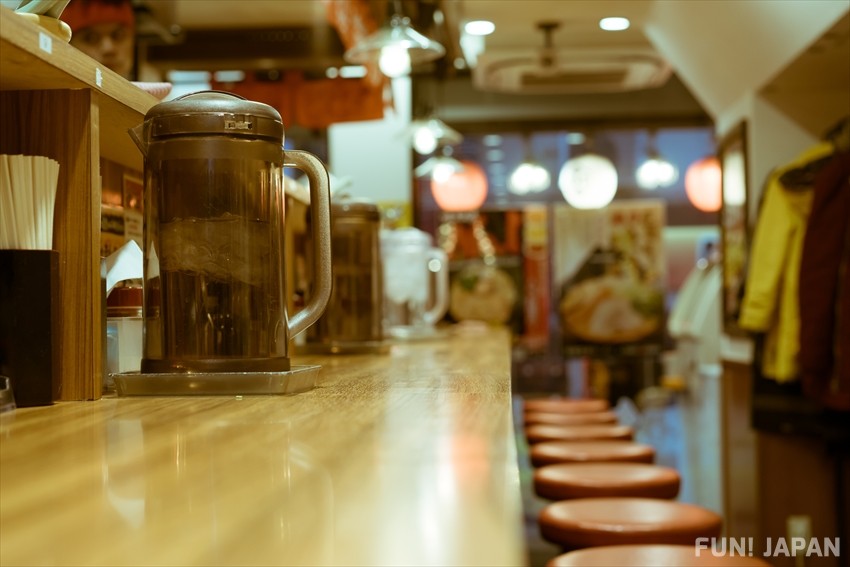
Soba is a truly versatile dish not only in style and toppings, but also in where you can enjoy it. Thanks to its simplicity and ease of preparation, it is often eaten as a light, ‘fast-food’ type meal, but with much healthier connotations. Standing soba restaurants are a great way to experience this part of Japanese food culture and can be found near or inside train stations, often on the actual platforms. Dishes cost a few hundred yen and can be served and eaten in a matter of minutes.
Contrastingly, soba is also served in many high-end specialty restaurants, with a focus on using the best ingredients and toppings. Often, a restaurant will serve Shinano or Etanbetsu soba and make the noodles themselves, with some even grinding the four themselves. Dishes often cost between 1,000 - 3000 yen, with prices being higher for options like tempura.
The Many Dishes: How to Eat Soba

Soba is a truly versatile dish that can be adapted for summer or winter, with many different seasonal and regional varieties.
Common Toppings for Soba
Many soba dishes are simply prepared and use a mix of different toppings to add colour, texture and flavour to the dish. With soba it is common for these ingredients to be added as toppings as opposed to being mixed into the soup. This is often to preserve the texture and flavour of fresh ingredients. Eggs, seasonal vegetables and seaweed or fish flakes are common options, as are chopped green onions. Many diners opt for one or two and keep the dish simple, although some dishes such as bukkake or hiyashi soba combine multiple options.
Mori Soba
Mori Soba is one of the simplest ways to enjoy soba and literally means ‘piled soba’. The noodles are served cold on a bamboo steamer or basket. This dish is especially popular in summer and comes with a tsuyu dipping sauce made with dashi, mirin, soy sauce and water, among other ingredients.
Zaru Soba
Very similar to mori soba, zaru soba are also served cold and take their name from the bamboo draining basket they are commonly served on. These noodles are topped with shredded nori seaweed.
Kake Soba
The most common form of hot soba served in Japan, kake soba places the noodles in a bowl of steaming tsuyu broth - this is similar to the dipping sauce served with cold noodles, but is watered down.
Tempura Soba
A popular combination thanks to the contrast in textures, tempura soba can be served with either hot or cold noodles. The tempura will often be a mix of seafood and vegetables, with seasonal choices being the most common.
Bukkake Soba
This is another cold soba dish, often eaten in hot summer months. The noodles are served in a thick chilled broth and topped with a mix of ingredients. The most common are raw egg, bonito flakes, green onion and shredded nori.
Tororo Soba
A very simple dish, tororro soba pairs plain soba with a bowl of sticky raw nagaimo (yam). The white yam is grated and becomes a fluid consistency
Sansai Soba
Often served at mountain lodges or in temples, sansai soba uses wild vegetables served with noodles in a hot broth. This is a nourishing and delicious way to try vegetables you would not normally be able to experience.
Kitsune Soba
Originating in Osaka, kitsune soba is a dish of noodles in broth with fried tofu called aburaage. It can be served hot or cold and is a popular option at standing soba restaurants.
Sobayu
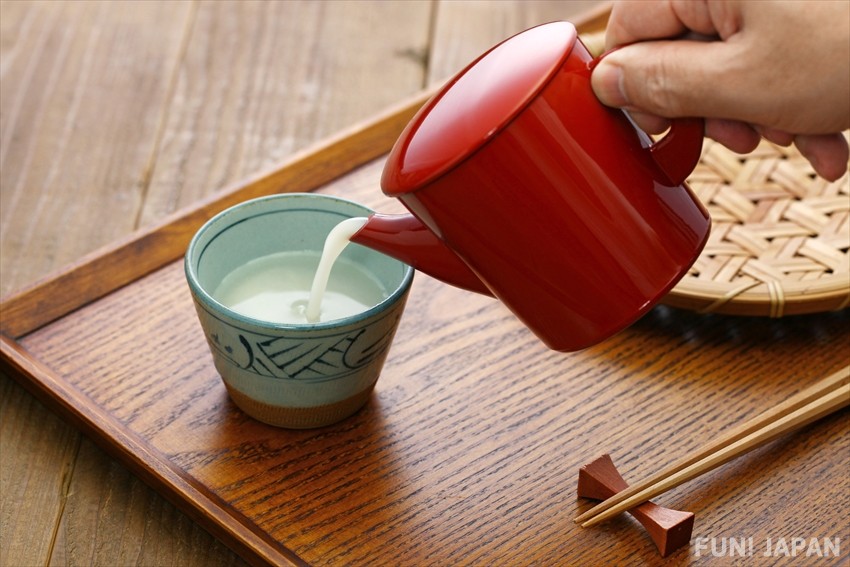
At the end of a meal in a soba restaurant, you will often be given a small cup or pot of soba-yu. This is the water the soba have been cooked in and is rich and creamy. It is common practice to add this to the bowl, combining with the tsuyu for a final nourishing broth.
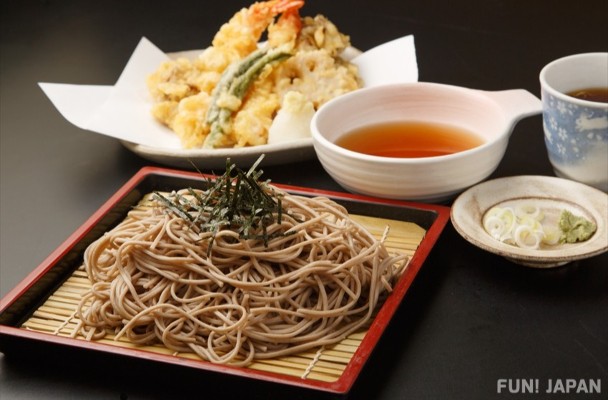
Comments